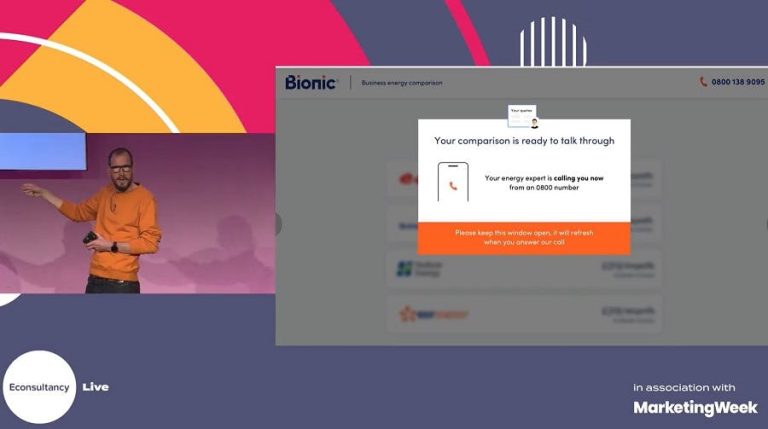
Today, digital communities rule the world of commerce. And with the shift to ecommerce having accelerated by roughly 5 years due to the pandemic, building a buzz online is more important than ever before.
A brand ambassador is a long-term brand partner who is paid not only to talk positively about the company they’re endorsing but also to embody it. They’re great at implementing the products into their lives and telling the brand’s story through their everyday lifestyle. Think Steph Curry and Under Armour, or Gigi Hadid and Tommy Hilfiger.
Each ambassador has influence in their own community, regardless of if they have a huge following or not. To ensure that you’re getting in front of the right people, choose ambassadors that represent each of your target consumer segments. These well-aligned brand ambassadors will talk about your products and services in a way that your potential new customers can relate to. Typically, ambassadors are chosen because they are real fans of the brand, have well-aligned goals, and can accurately represent the values of the company. Ambassadors are trained extensively on the brand’s products, services, mission, and values — ensuring that they have insider knowledge and become a true extension of the brand family.
Throughout a partnership, ambassadors will reveal the real affinity they have for the brand they represent. Because audiences can see that the ambassador consistently uses a specific product over a long period of time, there is more transparency and authenticity.
Who are brand ambassadors?
While one-off influencer marketing campaigns are great for short-term PR pushes, the best way to ensure sustainable business growth is to nurture relationships with your biggest brand enthusiasts and turn them into ambassadors.
As big tech companies like Google and Apple phase out support for 3rd-party cookies, brands will have to change how they advertise to users across the web. One of the ways to continue personalizing ads and targeting audiences in a privacy-focused way is by working with a diverse group of brand ambassadors.
What is the difference between brand ambassadors and influencers?
The first and most common ambassador activation is co-creating content for social media. Since brand ambassadors create evergreen content, it’s always relevant and timely. Repurposing their content across every marketing channel eliminates the need for studio shoots year-round.
- Duration of partnership: Brand ambassadorships take place over a long period of time — unlike influencer partnerships, which are not always long-term. While many brands today place importance on building relationships with influencers, it’s still common to see seasonal or one-off influencer partnerships.
- Number of followers: Brand ambassadors can range from celebrities to “regular” people. In other words, ambassadors don’t necessarily have to be famous or have huge followings online like traditional influencers. For instance, brands like Victoria’s Secret PINK and Red Bull hire “regular” college students to reach younger demographics.
- Payment: Brand ambassadors typically receive a flat payment (in addition to various perks) for their long-term partnership, while influencers are usually paid based on their ability to impact their followers’ choices and real-time metrics like engagement rate. This means that brands can get more for less from ambassadors, as they can lock in rates with them early on.
- Exclusivity: Brand ambassadors often agree to be exclusive to a brand (at least among that industry), allowing brands to monopolize the ad space on their feed. Influencers, on the other hand, are typically free to work with any brand they like — including competitors.
Why should brands invest in ambassadors?
In recent years, there has been a popular misconception that the terms “influencer” and “brand ambassador” are interchangeable. This is because many brands have turned their influencers into ambassadors after running multiple successful campaigns together. However, there are several key differences that distinguish them from one another, such as:
1. Partnerships will seem much more genuine from the consumer’s perspective.
Whether you’re focusing on influencers, customers, or employees, turn your most passionate brand enthusiasts into ambassadors. With long-term ambassadors advocating for your brand, you’re guaranteed to run more authentic campaigns, reach target audiences more effectively, and build a brand that consumers want to be a part of.
Going forward, brands can follow suit by working with ambassadors in more meaningful ways, like co-creating entire collections, co-hosting events, and really building the brand together through a consistent feedback loop.
2. Brand ambassadors can personalize ads and target audiences, despite the impending “cookiepocolypse”
A recent study by Kantar found that 93% of consumers turn to their friends and family for trusted information about brands and services — but it doesn’t stop there. Also, 76% of consumers say they trust the reviews they read online as much as personal recommendations, indicating that most buyers place a high level of confidence and trust in their fellow consumers’ opinions.
But co-creation goes beyond just posting social content. In recent months, brands like Poshmark are even offering their ambassadors a share in the company. Other brands are enlisting celebrity ambassadors as creative directors and compensating them with equity. These collaborations mean that the ambassador is not just a spokesperson or “face” of the brand, but rather treated as a traditional investor who has a stake in the growth and wellness of the business.
Have you ever seen your friend’s social post, read a customer’s review, or watched an expert’s YouTube tutorial that prompted you to buy a product? If so, you’re not alone.
3. There are more opportunities for co-creation.
[embedded content]
Need more guidance on building and executing brand ambassador programs? Enroll for free in AspireIQ’s Ambassador Academy.
By leveraging brand ambassadors on social media, you can share a powerful message that will resonate with those who matter most to you. Lean on them to tell a story around your brand, rather than just promoting your products and services.
*This is a guest post by Jenn Kim, Content Marketing Specialist at Aspire IQ.
Turn your biggest brand enthusiasts into brand ambassadors
This is especially helpful if the product takes effect over time, such as a skincare product that reduces acne scars or protein powder that assists muscle growth. Ambassadors can post before and after shots to back the efficacy of the product, and audiences gain more trust in the brand.
Because the nature of an ambassadorship is long-term, brands and ambassadors have time to collaborate in many different ways.






